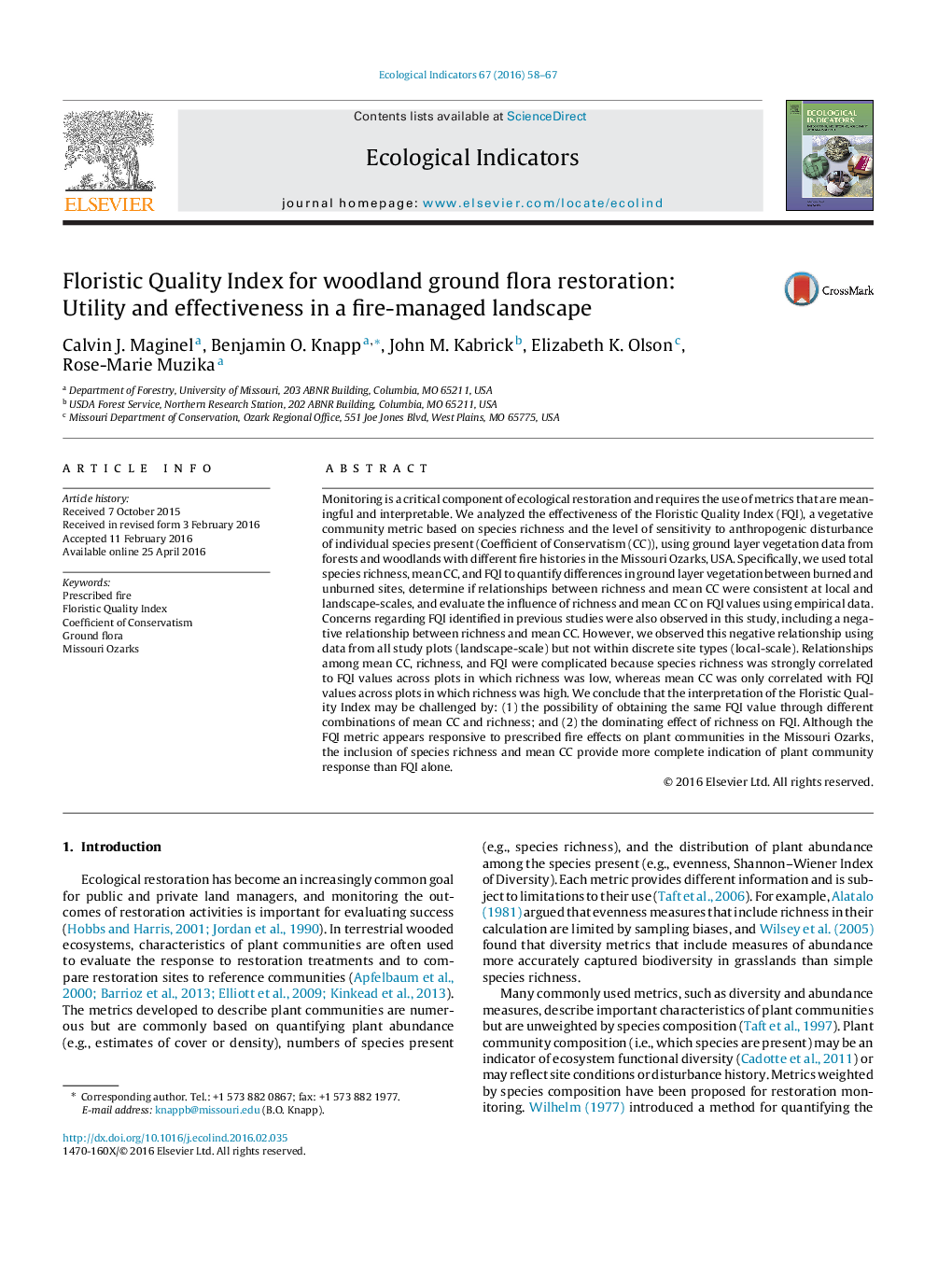| کد مقاله | کد نشریه | سال انتشار | مقاله انگلیسی | نسخه تمام متن |
|---|---|---|---|---|
| 4372854 | 1617135 | 2016 | 10 صفحه PDF | دانلود رایگان |
• Floristic Quality Index (FQI) was developed to describe plant community composition.
• We evaluated FQI derivation and interpretation in wooded ecosystems in Missouri.
• FQI values were more strongly correlated to species richness than mean Coefficient of Conservatism (CC).
• Richness and mean CC were negatively correlated at the landscape-scale but not at local scales.
• Richness and mean CC each provide important, unique information for interpretation of FQI.
Monitoring is a critical component of ecological restoration and requires the use of metrics that are meaningful and interpretable. We analyzed the effectiveness of the Floristic Quality Index (FQI), a vegetative community metric based on species richness and the level of sensitivity to anthropogenic disturbance of individual species present (Coefficient of Conservatism (CC)), using ground layer vegetation data from forests and woodlands with different fire histories in the Missouri Ozarks, USA. Specifically, we used total species richness, mean CC, and FQI to quantify differences in ground layer vegetation between burned and unburned sites, determine if relationships between richness and mean CC were consistent at local and landscape-scales, and evaluate the influence of richness and mean CC on FQI values using empirical data. Concerns regarding FQI identified in previous studies were also observed in this study, including a negative relationship between richness and mean CC. However, we observed this negative relationship using data from all study plots (landscape-scale) but not within discrete site types (local-scale). Relationships among mean CC, richness, and FQI were complicated because species richness was strongly correlated to FQI values across plots in which richness was low, whereas mean CC was only correlated with FQI values across plots in which richness was high. We conclude that the interpretation of the Floristic Quality Index may be challenged by: (1) the possibility of obtaining the same FQI value through different combinations of mean CC and richness; and (2) the dominating effect of richness on FQI. Although the FQI metric appears responsive to prescribed fire effects on plant communities in the Missouri Ozarks, the inclusion of species richness and mean CC provide more complete indication of plant community response than FQI alone.
Journal: Ecological Indicators - Volume 67, August 2016, Pages 58–67
